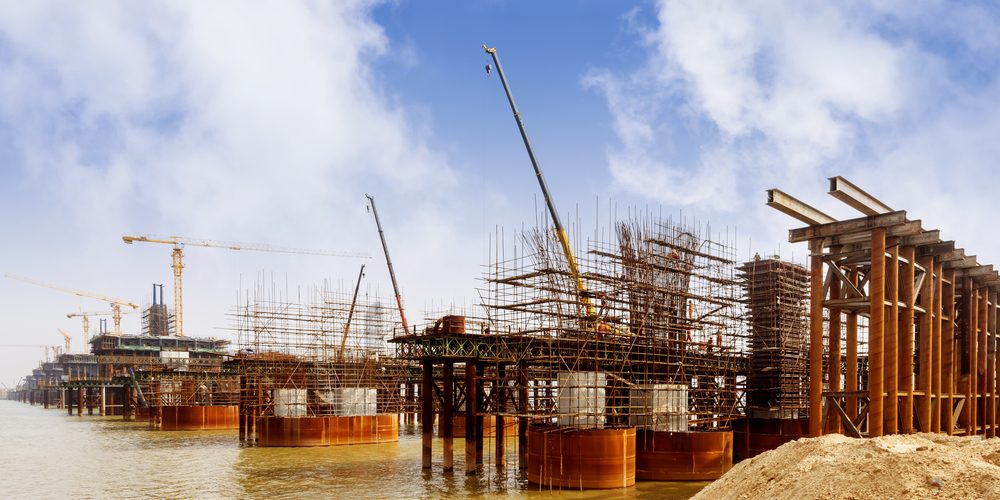Did you know: Across the United States and all over the globe, there are moratoriums that prevent bridge and road developers from doing the work they need to get jobs done?
For example, in the Mission Bay area of San Diego, bridge construction work is not allowed from Memorial Day to Labor Day.
There’s nothing more frustrating than starting on a project only to be forced to take a three-month break! It’s even worse when you consider the time and expense involved in closing down the project, laying off or re-deploying workers, storing equipment, and then having to put everything back into place again.
The solution: A solid bridge construction schedule
So, what can you do to avoid issues related to moratoriums and other types of construction delays? The best solution is to employ an experienced project manager to develop detailed schedules. This person should have in-depth knowledge of local and national bridge construction issues and regulations.
Every project must have a construction schedule. It should provide detailed information about when and how work will get done.
Many novice schedulers err by putting too much effort into the “when” and too little on the “how.” When the “how” isn’t fully thought through, issues like delivery problems, missing equipment, incorrect staffing — and moratorium delays — can slow construction. This usually results in lower profits on the impacted jobs and harm to the reputations of contractors who don’t plan for delays. After all, who wants to work with a company they can’t depend on to get work completed on time?
In the end, a schedule must lay out the order and sequence of the workflow, along with the steps that will be taken to install materials and get the job done. It should also take into account possible weather issues, project changes, and other problems that could impact timing. A good scheduler includes contingencies in the plan that explain what should be done to resolve these issues should they come up.
The construction scheduler is responsible for getting the job done efficiently and cost-effectively while maintaining the integrity of the concept and design of the bridge, no matter what comes up during the construction process.
Developing the schedule
To start, the scheduler must fully understand the overall scope of work and the details around how all the components should come together. This is the foundation of a sound construction schedule that a project team can depend on.
An experienced scheduler will take things to the next level by looking for ways to build efficiencies into every part of the project — including how things are sequenced. The schedule should consider how all the contractors or subcontractors will interact, along with the placement and assembly of the tools, equipment, components, and systems.
If a scheduler takes time to understand lead times and how materials are assembled, they’ll be able to analyze and evaluate different installation sequences and processes and recommend the most effective and efficient ones.
Using an experienced scheduler will not just help avoid costly problems and delays, it will also find efficiencies that will increase project profitability.
The sooner schedules are defined and made available to the project team and all related stakeholders, the better. It ensures that everyone has adequate time to review them, identify issues, and provide input. This turns scheduling into a collaborative effort, making it less dependent on the knowledge and experience of a few people.
Added benefits
In summary, here are reasons it’s critical to have a solid schedule for every bridge construction and maintenance project:
- It helps the team understand all the details related to projects and how they need to come together.
- It prevents unexpected “surprises.”
- The process of developing schedules encourages the project team to think about how they could solve problems before they happen.
- A carefully-constructed schedule identifies the most efficient and cost-effective work sequencing.
- It improves planning for labor, tools, supplies, and equipment.
- It encourages communication with the client, key stakeholders, contractors, and subcontractors.
- It helps determine optimal times to purchase materials and rent equipment and have them delivered when needed on job sites.
- It helps ensure all applications, paperwork, and plans are completed on time.
- It gives key stakeholders a clearer perspective on how to plan their own activities
- A schedule improves job safety because it sequences activities to ensure maximum protection for workers.
- It prevents damage to adjacent land, roadways, watersheds, and properties.
- It helps prevent seasonal issues, including construction moratoriums and complexities related to extreme weather.
If you’re still not convinced of the value of developing construction schedules, the Construction Industry Institute (CII) conducted a study and found that effort put into pre-project planning made a quantifiable contribution to the ultimate success of projects.
Want to learn more about the value that scheduling can have on bridge development? The experts at BridgeMasters have worked on countless construction initiatives — from relatively simple to extremely complex — and can provide you with the advice you need to get jobs done right.

